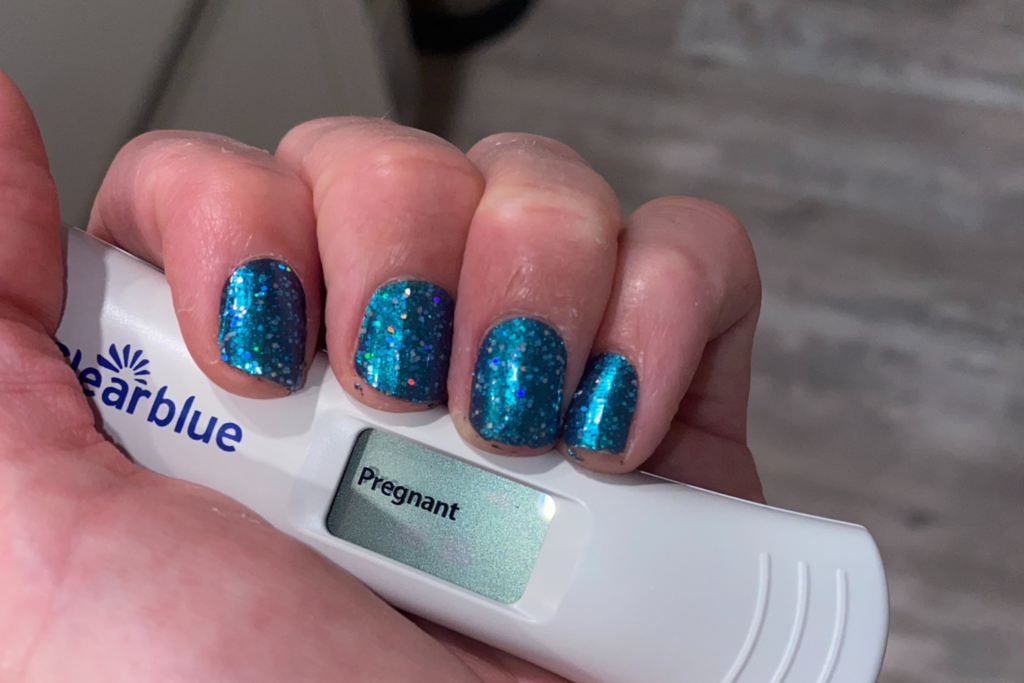"Doctors were proclaiming that “everything looked good” but I still wasn’t getting pregnant."
This describes a Mira customer’s personal experience and/or was sourced from a review or interview. Mira cannot guarantee the same results for everyone. Results will depend on each individual’s health conditions. Mira is not intended to diagnose or treat any diseases. Please consult with your doctor.

Jillian was diagnosed with PCOS when she was a teen so she knew that getting pregnant might be a challenge, but after countless doctors telling her everything was fine, she was looking for something more. Not only did Mira help her track ovulation where other products didn’t, but she finally could say the words she’d been longing to hear “I’m pregnant”. Read on to learn how Jillian used Mira to help her cope with PCOS and get to know her cycle so she could conceive.
In the beginning
From as far back as she could remember, Jillian had a feeling she would have issues getting pregnant. When she was in her teens, doctors tried to convince her that what she was experiencing was normal, but she just knew it wasn’t. Three of her aunts suffered from debilitating endometriosis and her mother had also had issues, so she had her suspicions about her own problems. Her suspicions turned out to be right when she was diagnosed with PCOS as an early teen. Jillian didn’t know it at the time, but this hormonal disorder is one of the most common causes of fertility issues but it’s not the end of trying to conceive.
More challenges
When Jillian and her partner were ready to start trying they didn’t know if they’d ever be able to conceive naturally, but they were determined to give it a go. She tried to get a referral to a reproductive endocrinologist right away and was immediately put on Clomid, a medication used to stimulate ovulation. Through that experience, she discovered she was just on the cusp of ovulation but they weren’t “quality” ovulations.
After a bout of severe pain in her lower right side, including a trip to the ER, Jillian discovered she had ovarian cysts and paraovarian cysts. A laparoscopy procedure was performed to have them removed, and she was also diagnosed with stage 1 endometriosis. Although rare, it is possible to have PCOS and endometriosis at the same time. Since each condition negatively impacts fertility, having them both can make fertility problems even more severe.
Jillian was frustrated and heartbroken. She was put on another medication, Letrozole to force ovulation. She fell pregnant quickly but unfortunately had a miscarriage very early on. The early loss was a chemical pregnancy but Jillian was determined to keep trying. Several more rounds of letrozole followed by a monitored cycle had doctors once again proclaiming that “everything looked good” but she still wasn’t getting pregnant. Continued use of Letrozole, but this time with a trigger shot added, resulted in another chemical pregnancy.
Heartbroken and beyond frustrated, Jillian was determined to find a solution to her fertility issues. She had tried other tests and none of them were working out, so when she saw an ad for Mira on Facebook she figured she had nothing to lose. Her reproductive endocrinologist wasn’t interested in looking at the numerical hormone data Mira provides, but thankfully she was able to switch to an OB that not only looked at her numbers, but encouraged the testing and used the results for guidance.

PCOS can mean a chronic lack of ovulation and the hormonal imbalances associated with the condition can impact testing. Your LH levels may not follow predictable patterns, making ovulation testing that much more challenging. With her PCOS Jillian knew her LH levels were consistently high. Testing with Mira helped show her that her LH was staying high and that she was ovulating later than expected. Everyone’s cycle is unique and with how PCOS impacts ovulation tests, having numerical hormone data to pinpoint her exact ovulation proved to be a lifesaver. With Mira, Jillian was not only able to see how her fertility issues impacted ovulation, but she was able to keep track of her cycles to know when to use the trigger shot.
The Two Week Wait
As anyone who’s been trying to conceive knows, the infamous two-week wait can feel like a lifetime. Jillian was desperate to successfully get pregnant and decided to test after 10 days. Using an hCG strip, she tested and saw a faint line that eventually got darker. Further testing confirmed the pregnancy.
Out of all the fertility gizmos and gadgets she’d tried, Jillian couldn’t believe she had success with Mira. Now as a new mom, she helps support other women walking the same road. She hopes that sharing her story gives others hope that it can happen for them too, even if the odds are stacked against them. Struggling to get pregnant and infertility can be a lonely road to walk but she advises others not to give up or lose faith.



